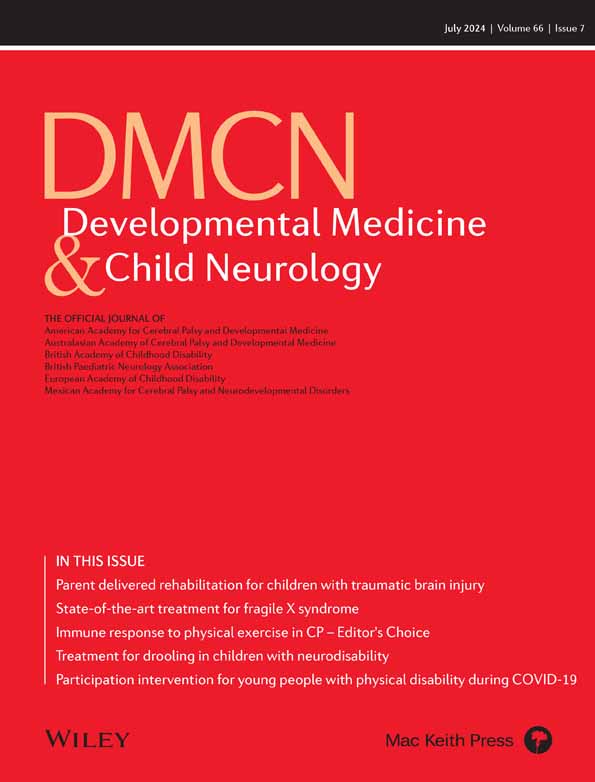Joubert syndrome and hydrocephalus: Further expanding the phenotypic spectrum of a pleiotropic ciliopathy
This commentary is on the Case Series by Gafner et al. on pages 948–957
Abstract
This commentary is on the Case Series by Gafner et al. on pages 948–957
Joubert syndrome is a genetically heterogeneous neurodevelopmental ciliopathy caused by mutations in over 40 genes, and characterized by the distinctive triad of hypotonia, psychomotor delay, and the pathognomonic molar tooth sign (MTS) on brain imaging. Besides the neurological phenotype, other organs such as the eyes, kidneys, liver, and skeleton are affected in a relevant proportion of patients, while defects of other organs, such as craniofacial, cardiac, genital, gastrointestinal, or respiratory, are much rarer.1 Of note, intrafamilial clinical variability has been reported even among affected siblings, and genotype–phenotype correlates have been established only for a subset of disease-causing genes.
Gafner et al. reported seven prenatal cases showing Joubert syndrome and hydrocephalus, and comprehensively reviewed the literature to address the question whether this association represents a coincidental occurrence, or it may represent a distinct clinical subtype of Joubert syndrome. While the authors report that hydrocephalus is extremely rare in Joubert syndrome, the observation of this phenotypic combination in multiple family members suggests a potential link with specific genes or variants.2 Unfortunately, given the very small number of patients with Joubert syndrome with ventriculomegaly or hydrocephalus even in the largest published cohorts, the statistical relevance of this association could not be proven, and this hypothesis needs to be confirmed in further cohorts of patients. Despite these limitations, this study highlights the undoubted relevance of deep phenotyping, both in prenatal and postnatal life, to allow a better clinical definition of Joubert syndrome, which is a paradigmatic example of a pleiotropic disorder. In turn, this may lead to new insights into the pathophysiology of the disease and to a more focused management and treatment of specific clinical features. Indeed, all reported fetuses were diagnosed during the second trimester of gestation by prenatal ultrasound or magnetic resonance imaging (MRI), showing the diagnostic MTS associated with ventriculomegaly or hydrocephalus. This allowed a more precise prognostic assessment, guided prenatal counselling, and, in a minority, provided a strong argument for initiating additional prenatal genetic testing.2
It is important to highlight that the diagnosis of Joubert syndrome can be reached in the second trimester of pregnancy and ideally should not be missed. The detection of a suspected MTS or even cerebellar vermis hypoplasia on routine ultrasound, either isolated or in association with other signs of ciliopathies (e.g. polydactyly or cystic kidneys), should always prompt a more detailed imaging assessment of the fetal brain by ultrasound or fetal MRI, which is highly sensitive in detecting the MTS.3, 4 In this light, it is crucial that healthcare professionals trained in prenatal diagnosis are aware of this rare condition and the spectrum of phenotypic manifestations possibly detectable already in fetuses.5 To this end, detailed case series and literature reviews on specific prenatal clinical associations, such as that on Joubert syndrome and hydrocephalus, are of paramount importance.2 It is worth emphasizing how antenatal diagnosis of Joubert syndrome with hydrocephalus can ensure that the most appropriate measures are put in place for delivery, to minimize risks and allow timely and potentially crucial interventions to the benefit of the newborn infant.
The co-occurrence of Joubert syndrome and hydrocephalus in multiple affected members of the same families suggests that specific genes may be responsible for this association. However, this has not emerged so far, as pathogenic variants in several Joubert syndrome genes have been occasionally reported in patients with Joubert syndrome and hydrocephalus, hampering clear-cut gene–phenotype correlations. Extensive phenotyping of antenatal and postnatal cases of Joubert syndrome and analysis of large cohorts through multicenter collaborations are essential to fill these gaps, and provide the most appropriate counselling and treatment tailored on each patients' genotype and phenotype.
ACKNOWLEDGEMENTS
Research on Joubert syndrome in the Valente Lab is supported by grants from the Italian Ministry of Health (Ricerca Corrente 2022–2024, Ricerca Finalizzata RF-2019-12369368 and Eranet Neuron NDCil), Telethon Foundation Italy (GGP20070). Open access funding provided by BIBLIOSAN.
Open Research
DATA AVAILABILITY STATEMENT
Not required.




